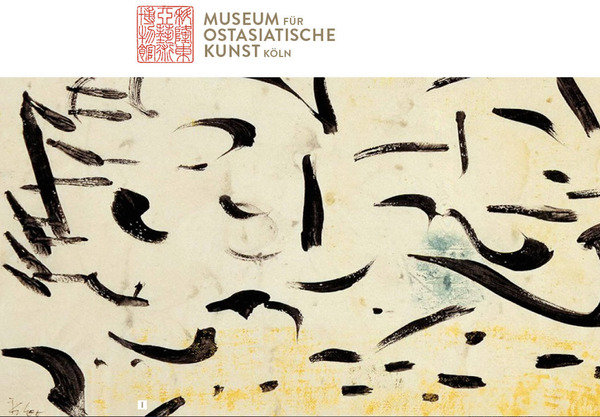Paul Klee
dal 17/10/2014 al 31/1/2015
Segnalato da
Paul Klee
Toru Takemitsu
Shuntaro Tanikawa
Kazuya Takahashi
Natsuki Ikezawa
Leiko Ikemura
Toyo Ito
Yuki Okumura
Osamu Okuda
Marie Kakinuma
17/10/2014
Paul Klee
Museum fur Ostasiatische Kunst, Koln
From Japonism to Zen: Paul Klee and the Far East. The exhibition is presenting more than 90 works by Klee together with some 90 works from the collection of the Museum, especially Japanese.

conceived by Osamu Okuda and Marie Kakinuma in association with the Zentrum Paul Klee in Bern and the Museum of East Asian Art in Cologne
One should be doing this sort of thing as well, not just imitating it.’ The words of Paul Klee during his early days in Munich in 1906 or 1907. By ‘this sort of thing’ he meant the ‘abstract’ aspect of the Japanese coloured wood-block print. Klee already had a profound knowledge of Japanese art by then. He was familiar with Emil Praetorius’s collection of Japanese wood-block prints. And in all probability he also visited the exhibition ‘Japan and East Asia in Art’, which was staged in Munich in 1909 with loans from the newly founded Museum of East Asian Art in Cologne and the ethnographic museums in Berlin and Munich. Klee’s friend and fellow artist Wassily Kandinsky wrote a commentary on this highly acclaimed exhibition in the ‘Blauer Reiter’ almanac.
The encounter with original works of East Asian art gave Klee an altogether new impetus, which went far beyond the vogue for Japonism. The influence of East Asian art can be seen especially in Klee’s graphic work, helping him, in his own words of 1908, ‘out of the blind alley of ornament’. His engagement with Japanese ink painting and the discovery of Japan paper also led him to develop his watercolour work while his ‘writing pictures’ of the 1930s were based on East Asian calligraphy.
Paul Klee’s view of the world was founded on a classic Western understanding of culture. And yet the confrontation with Far Eastern and in particular with Japanese culture reflects an attitude of openness and curiosity. No cohesive attention has hitherto been paid to this aspect of his work, which can be precisely documented through his reaction to Japanese and Chinese art, literature and poetry, and not least, Daoism and Zen Buddhism. The exhibition makes clear the extent to which the art of East Asia was an integral component of his œuvre.
The exhibition, conceived by Osamu Okuda and Marie Kakinuma in association with the Zentrum Paul Klee in Bern and the Museum of East Asian Art in Cologne, examines Klee’s engagement with East Asian art and culture for the first time. Klee was, however, also the fulcrum for subsequent artists in Japan. Marie Kakinuma uses the work of seven Japanese artists to show how Klee’s influence lives on in present-day Japan.
The exhibition is presenting more than 90 works by Paul Klee together with some 90 works from the collection of the Museum of East Asian Art in Cologne. The reception of Klee in Japan is represented by selected works by Tôru Takemitsu, Shuntarô Tanikawa, Kazuya Takahashi, Natsuki Ikezawa, Leiko Ikemura, Toyô Itô and Yuki Okumura.
Museum für Ostasiatische Kunst (Museum of East Asian Art)
Universitätsstraße 100 50674 Köln
Opening hours:
Tue to Sun 11 a.m. to 5 p.m.
Every 1st Thu of each month: 11 a.m. to 10 p.m.
closed on Mondays
Tickets
Adults: € 3,50
Concession: € 2
Free admission for children up to 6 years, for Cologne residents up to 18 years, students





